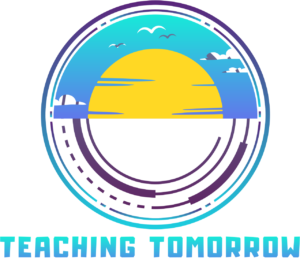
The Future is Now: How Companies Can Stay Ahead of the Game with Workforce Development
The COVID-19 pandemic has had a significant impact on the global economy, causing many companies to reduce their workforce to cope with the financial losses. However, as businesses attempt to rebuild their capacity to pre-pandemic levels, they are faced with a structural labor shortage that is predicted to last until at least 2030, according to the US Bureau of Labor Statistics.
Moreover, with the rapid advancements in AI and robotics, jobs are being revolutionized in unpredictable ways, which can further widen the workforce gap. In addition to this, the effects of climate change, pandemics, wars, and other global disruptions can make it challenging for companies to secure a steady supply of skilled labor.
Laying off employees to cut costs may be a tempting short-term strategy for companies, but it can have long-term implications. Instead, companies should adopt a more strategic approach to workforce development to ensure they have the right talent for the future.
Here are three recommendations for companies to stay ahead of the game in workforce development:
1. Use Data-Driven Talent Strategies
To create an effective talent strategy, companies should start by leveraging data. Workforce modeling can help companies run at peak efficiency in any economic climate. During a downturn, data can be used to thin resources with precision or avoid layoffs altogether.
Predictive analytics can help companies anticipate chronic labor shortages in critical areas, allowing them to make better decisions on hiring, training, and staffing schedules. For instance, some hospitals have used predictive analytics to replace standard rotations with leaner staffing schedules and contingent staff based on hourly patient-need trends, allowing them to avoid overstaffing, prevent nurse burnout and optimize payroll.
Connecting people needs and business outcomes through people analytics is a solid foundation for any talent strategy. Leveraging data to identify patterns and make informed decisions can help companies better align their talent strategy with their business objectives.
2. Adopt Zero-Based Budgeting and Continuous Planning
Instead of basing budgets on the previous year’s numbers, companies should use zero-based budgeting, which involves justifying every expense from a zero base each year. This approach helps align expenditures with pressing needs and helps identify and eliminate bloated or obsolete programs.
Continuous planning ensures that companies constantly re-evaluate their expenses with fresh data in mind. Companies can leverage workforce analytics platforms to objectively benchmark compensation standards, assess talent availability, match resource inputs with business outputs, and identify bottlenecks or other issues.
3. Nuture Your Talent Pool
Rather than laying off employees during an economic downturn, companies should consider reskilling and upskilling their workforce for the jobs of the future. The World Economic Forum estimates that AI and automation will disrupt 85 million jobs globally by 2025. Therefore, companies should use economic slowdowns to retrain their workforce, as Microsoft is doing by upskilling 15,000 workers with AI, machine learning, and data science capabilities.
Offering paid or unpaid sabbaticals for employees to pursue education or training can have long-lasting benefits for the company. Employees who take sabbaticals return to work with renewed energy and new ideas. Additionally, offering interim assignments enables others to develop skills and take on leadership roles.
Takeaway
In conclusion, the current business landscape is marked by a labor shortage that poses significant challenges for companies. However, this is also an opportunity for companies to take proactive measures and develop a robust workforce that can adapt to the evolving market demands. By implementing data-driven talent strategies, companies can optimize their resources and avoid layoffs during economic downturns. Adopting zero-based budgeting and continuous planning can help companies evaluate their expenses effectively and allocate resources where they are needed the most.
Additionally, nurturing the talent pool by upskilling and reskilling employees is essential in preparing them for the jobs of the future. This approach not only helps companies fill the skills gap but also boosts employee loyalty and engagement. The pace of technological change and the advent of AI and automation make reskilling a critical component of future-proofing the workforce. Companies that invest in reskilling and upskilling their employees now will be better positioned to compete in the future.
In summary, companies that prioritize workforce development and adapt to the changing business landscape will have a competitive advantage over those that do not. The recommendations outlined in this article can help companies stay ahead of the game in workforce development and ensure that they have a talented and resilient workforce that can weather any storm. By embracing these strategies, companies can future-proof their workforce and prepare for the challenges and opportunities that lie ahead.





